How to Fix Overwatered Plants | 5 Easy Tips!
Learn how to care for overwatered plants so you can save your plants before it’s too late.
Sometimes we rescue plants from garden centers and other times they’re gifted or already ours. Whatever the case, overwatering is a real concern for the health of the plants and its roots.
Sometimes it is possible to fix overwatered plants. If your plants get too much rain or face another overwatering issue, try to remedy the situation as soon as possible.
Let’s get started before it’s definitely too late!
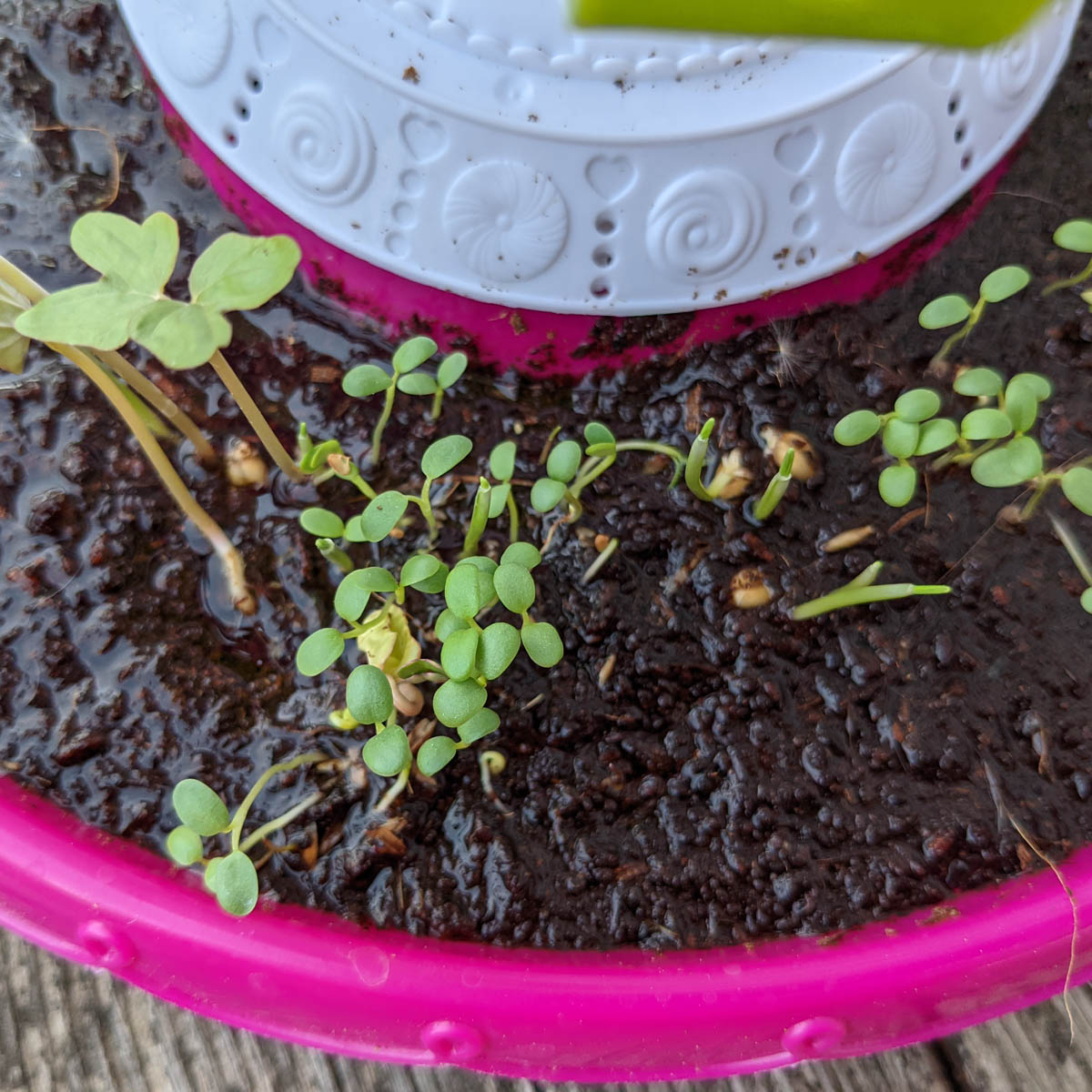
What Are Some Signs of Overwatered Plants?
Overwatering plants is a common issue in the garden and indoors. It also occurs with young seedlings from time to time.
Some signs of overwatered plants may include:
- Dark, moist, cakey soil
- Fungus growth, such as mushrooms
- Green algae on the perlite or soil surface
- Yellowing leaves or brown leaves
- Dropping leaves of any color
- Flimsy or mushy plant stems
- Wilting leaves (potential root rot)
Knowing how to help overwatered plants begins with first identifying that a plant is, in fact, overwatered. With some plants, the signs of overwatering are quite similar to the signs of underwatering.
What to Do If You Overwater a Plant
Overwatering plants happens to everyone at some time or another. Sometimes it isn’t even really your fault, especially after a big rainstorm. If you accidentally water plants too much, you can try to drain or soak up some of the excess water. Another trick is to move the plants to a sunny place, if in pots or containers, to let some of the water naturally dry up. Finally, if you are truly concerned, you may even try replacing some of the soil.
How to Fix Overwatered Plants | Your Best Chance
With overwatered plants, you won’t find any guarantees on saving them. All you can do is attempt your best efforts at saving them.
Here are a few tips on how to fix overwatered plants.
Check Drainage
Look to see if the drainage in the pot is sufficient or blocked in some way. Correct the situation if needed.
Some planters and flowerpots do not come with holes in the bottoms. If this is the case, you may need to drill or carve holes for better drainage.
You should also try to use a light and airy potting soil to allow the water to drain and the roots to get through the soil easily.
Allow Waterlogged Plants to Dry Out a Bit
Before watering next, allow the waterlogged plant to dry out a bit. You don’t want to shock the plant by turning a full 180, but certainly avoid contributing to the problem.
When you do water overwatered plants, do it in the morning or daytime. Watering at night often leaves the soil soggy longer than necessary.
Truly check the soil before watering to make sure it really needs it. Oftentimes the roots will begin to rot when the soil is too wet for too long.
Check for Fungus
Look for fungi problems with your plant and treat if necessary. Overwatered soil may give hints like mushrooms and other fungi popping up.
You may start to see fungus gnats swarming when indoor plants are too moist. (They look like fruit flies.)
Repot if Necessary
Container plants may drain relatively quickly, but for sensitive plants, you may wish to repot in new potting soil to help remove some of the saturation.
After a heavy rainfall, some plants may truly get too much water. If your plants are sensitive to this and they need a rescue from overwatering, moving them into a new pot with new soil may do the trick.
Also be sure to check the drainage of your pot if you haven’t already!
Trim Water Damaged Roots
If roots become waterlogged, they may turn brown or black and mushy. Healthy roots are generally white. You can trim away the dying roots to give the plant a second change.
This may or may not work, depending on the severity. Still, leaving the plant with the waterlogged roots gives even less chance of survival.
Protect from the Rain
The last thing overwatered plants need is more water. Rain doesn’t always give you much choice.
If more rain is in the forecast, move potted plants or consider installing a tarp or other setup to shield your plant from even more water.
If you remember to remove it right away, you may have luck placing a five-gallon bucket over top of your waterlogged plants.
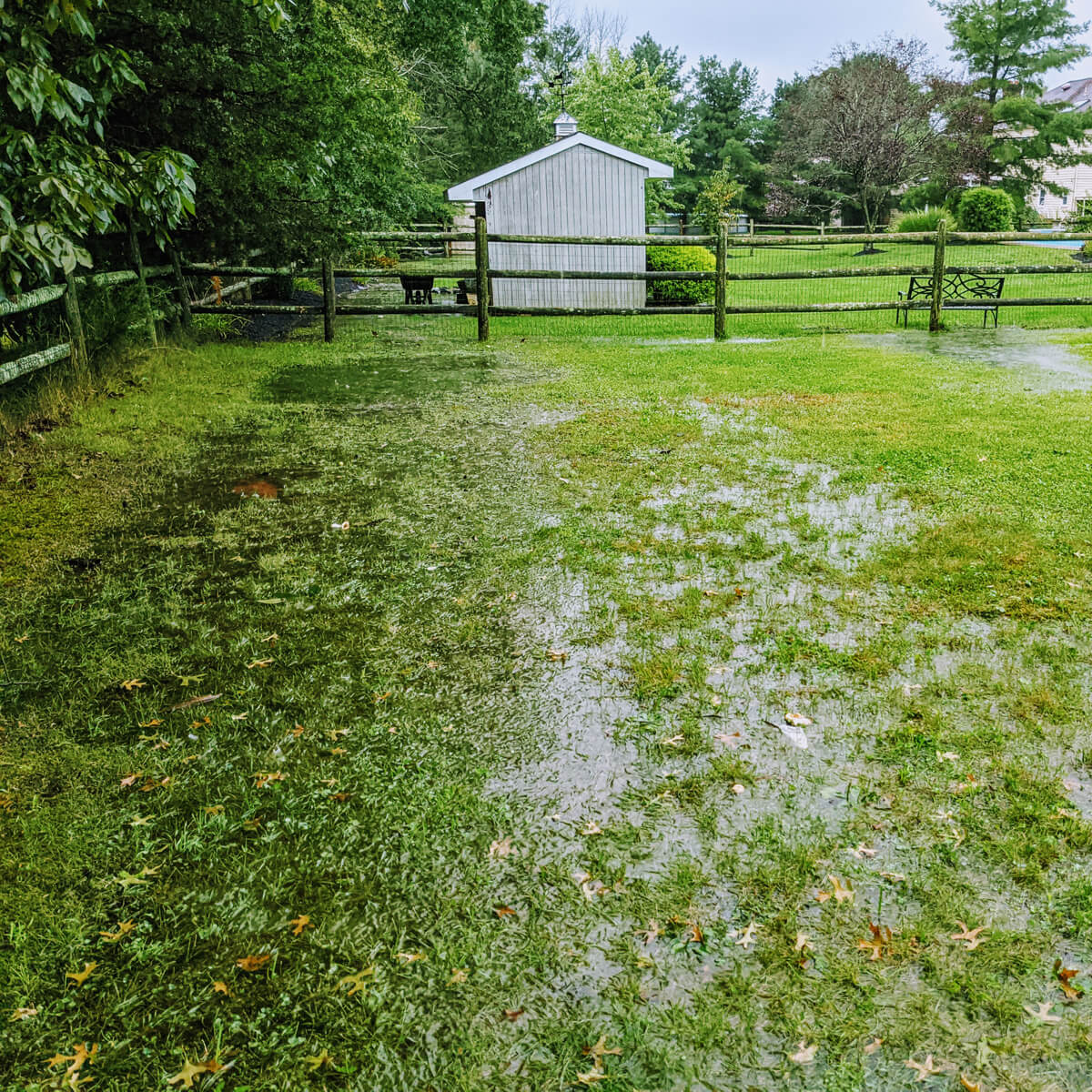
Everything drained naturally without my intervention.
Relax
Before you get too far down the trail of, “how do I fix an overwatered plant,” remember to breathe. Sometimes we worry more than we have to, and that’s natural, especially when it’s something we care about, like our gardens!
As evidenced in the photo above, sometimes plants clearly get overwatered. That doesn’t automatically mean they’re going to die or fare poorly, though. My garden did just fine after all that rain. I did not even give any special treatment to my strawberry planters.
Have a little faith, watch for signs of new growth as well, because sometimes plants do AMAZING after a big rain!
How to Avoid Overwatering Plants
As you try to figure out how to save an overwatered plant, go easy on yourself. Do your best to fix overwatered plants but realize that perhaps the even more important lesson may be to learn how to avoid overwatering plants in the first place!
Here are a few tips on ways to avoid overwatering plants:
- Ensure good drainage from the start. If you make sure your pots and planters drain freely, you’ll have better luck than planting in plugged pots. Also, choose a moisture-control potting mix or fast-draining soil (like cactus/citrus potting mix) for plants that don’t like wet feet.
- Stick to a watering schedule. Water your indoor plants on the same day every week. Water your outdoor plants as needed on a schedule as well. Obviously, you may have to adjust your schedule due to rain, drought, or hot, sunny days.
- Use a rain gauge. A rain gauge measures the amount of rain you get during any given storm. If you see you got a half-inch of rain, you can better plan for how much watering the plants need for the rest of the week.
- Prevent overwatering by the rain. Protect potted plants by moving them out of the rain during extreme storms. You can also put five-gallon buckets over sensitive plants if necessary.
- Look for signs of thirsty plants. Some plants are very forgiving and may do fine even if you forget to water them. Others may be more sensitive. Look for wilting, droopy leaves or petals as a possible sign of plants that need watering. Remember, some signs of being overwatered are almost identical to those that are underwatered. However, if you know your plants haven’t had water in a while, because you’re on a schedule and you track the rain, you can plan even more successfully.
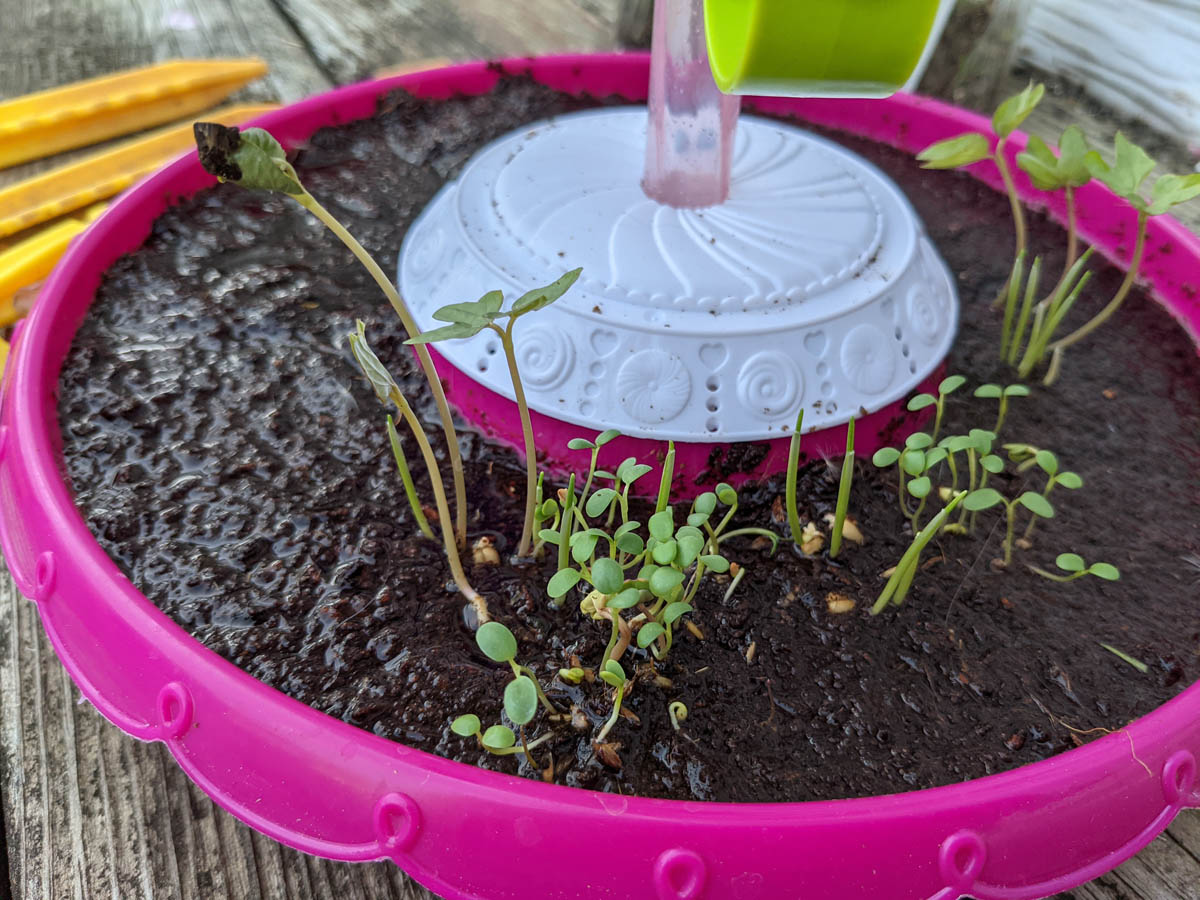
Final Thoughts: How to Fix Overwatered Plants
Rescuing overwatered plants or underwatered plants isn’t a sure thing, so it helps to go into it with a little grace.
You may save the plants, you may not. The important thing is, you tried!
Now that you know how to fix an overwatered plant for the best chance of survival, I hope these tips help. And for the future, I would purposely avoid buying plants from a nursery that looked overwatered unless they seemed very healthy aside from the soil content.
To me it seems to be a gamble most of the time as far as how the waterlogged plants will fare.
That being said, I love a good gardening challenge (except for garden pests!) and I will happily attempt to save what I’ve got!
Do you have any tried-and-true tips on how to rescue overwatered plants?
Feel free to share your best tips and any questions you have in the comments below!
02.10.22 – Edited to add flooded backyard photo and update with section on how to avoid overwatering plants. Also added a few tips and improved the photo sizes.


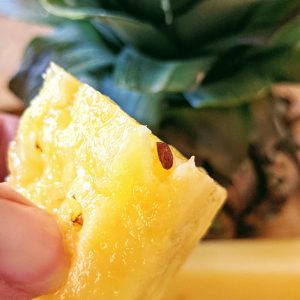
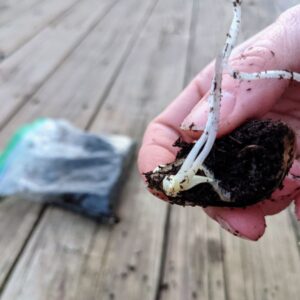



the rain came very hard, and my dahlias are sitting in soggy water soil they are wilting and dying what can i do to save them.
Hi Cathy,
So sorry to hear about your dahlias! I hope they recovered for you. If they are still suffering, I would try to repot the tubers in soil that is less soggy. I am sorry I did not see your comment sooner, I came down with a bad cold and hadn’t managed to log into my comments until now. Hope that all is well. Sending good wishes for your garden!